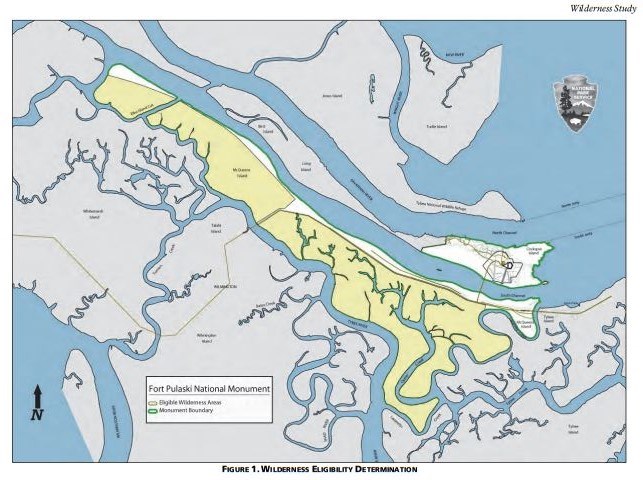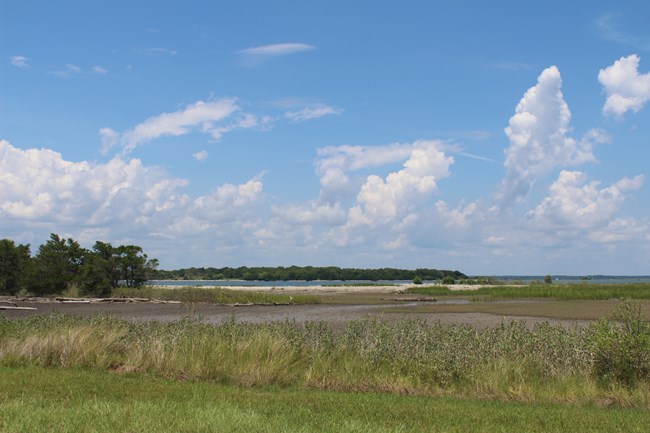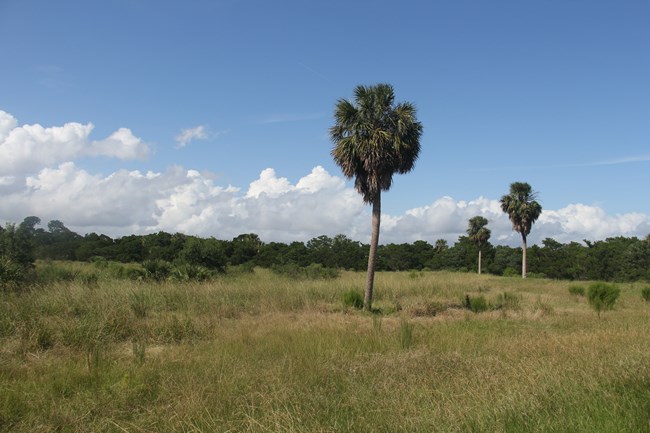
FOPU GMP and EIS Eligible Wilderness at Fort PulaskiNearly 4,500 acres of pristine salt marsh located in Fort Pulaski National Monument is categorized as eligible wilderness and is managed in accordance with NPS policy as wilderness in order to preserve its wilderness character.
See pages 43-49 of the Fort Pulaski General Management Plan for the park's current Wilderness Study. The Wilderness ActThe Wilderness Act, passed in 1964 and signed into law by President Lyndon B. Johnson, established the National Wilderness Preservation System (NWPS) and instructed federal land management agencies, including the National Park Service, Bureau of Land Management, U.S. Fish and Wildlife Service, and U.S. Forest Service to manage wilderness areas and preserve wilderness character. Each federal agency manages several individual wilderness units that differ in size and geography.Today, The National Wilderness Preservation System (NWPS) is a network of 765 wilderness areas, protecting over 109 million acres of land and water in the United States. 50 national park units have designated wilderness, totaling more than 44 million acres. Many other national park units, however, have “other categories of wilderness,” or lands not designated, but managed as wilderness per NPS policy. Together with NPS designated wilderness, this means over 80% of all NPS lands are managed as wilderness. 
NPS/J. Cadoff Wilderness StudyWilderness studies ultimately result in a determination of whether any portions of a national park unit should be formally recommended for inclusion in the National Wilderness Preservation System as defined inthe Wilderness Act of 1964. Only Congress can formally designate lands as wilderness. Under National Park Service management policy, lands are considered eligible for wilderness if:

NPS Photo Wilderness CharacterWilderness character is what is measured and managed for to protect the wild nature of wilderness as well as visitors’ experience in it. It is a holistic concept based on the interaction of:
Because personal experiences and symbolic meanings are intangible and may differ from person-to-person, the agencies that manage wilderness have defined the 5 tangible qualities of wilderness character:
|
Last updated: January 27, 2025
